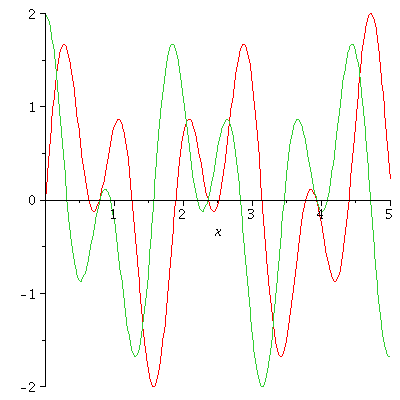Die Fourier-Reihe
| > | restart:
with(plots): with(plottools): |
Fourier: Jede periodische Funktion f(x), die beschränkt und stückweise stetig ist, lässt sich als eine Linearkombination von Sinus- und Cosinusfunktionen darstellen und in eine Fourier-Reihe entwickeln.
| > | a:=(x0,l,n)->1/l*int(f(x)*cos(n*Pi*x/l),x=x0..x0+2*l);
b:=(x0,l,n)->1/l*int(f(x)*sin(n*Pi*x/l),x=x0..x0+2*l); g:=(x0,l,N)->a(x0,l,0)/2+sum((a(x0,l,n)*cos(n*Pi*x/l)+b(x0,l,n)*sin(n*Pi*x/l)),n=1..N); |
 |
|
 |
|
| (2.1) |
Beispiel 1: Periodische Folge von Rechteckpulsen
| > | f:=x->piecewise(x<1,1,x<2,0,x<3,1):
plot(f(x),x=0..3); |
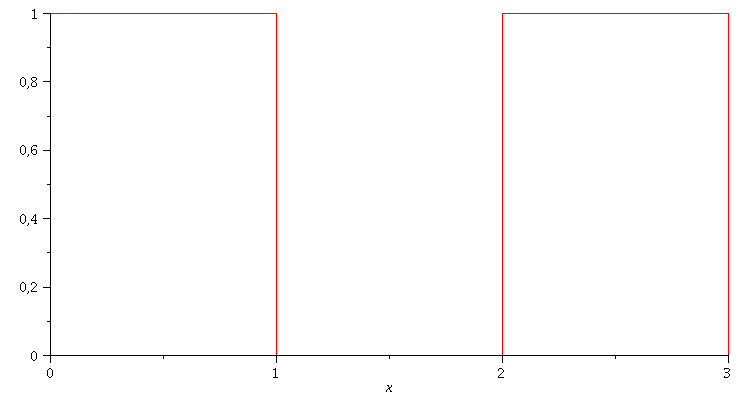 |
Fourier-Reihe mit drei Gliedern (N=3):
| > | g(0,1,3);
plot({f(x),g(0,1,3)},x=0..5); |
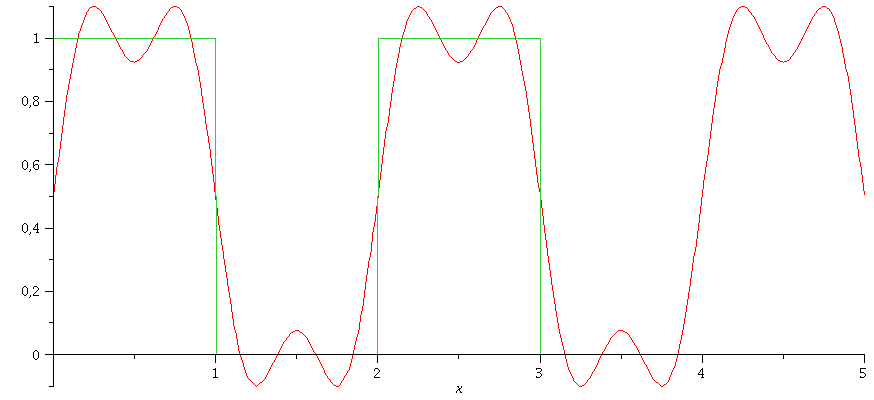 |
Fourier-Reihe mit 20 Gliedern (N=20):
| > | g(0,1,20);
plot({f(x),g(0,1,20)},x=0..5,numpoints=200); |
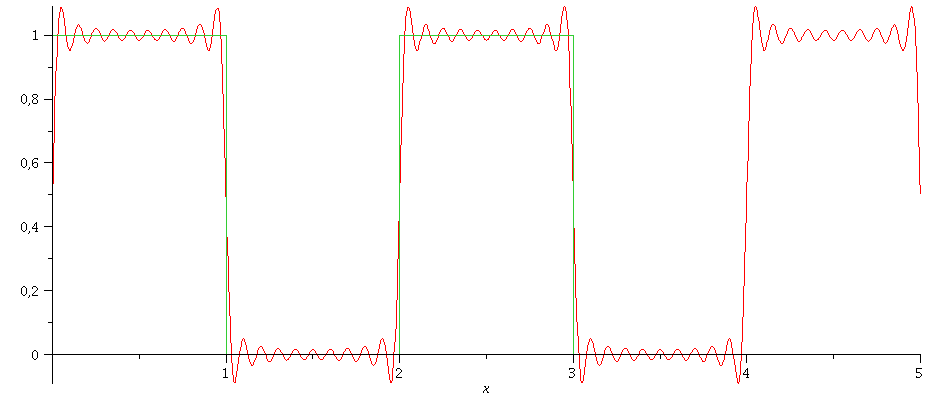 |
Animation: N=2 bis N=40:
| > | ff:=plot(f(x),x=0..5,numpoints=200,color=black):
Nend:=40: for i from 2 by 1 to Nend do NN:=i; gg:=plot(g(0,1,NN),x=0..5,numpoints=200,color=red); Ani[i]:=display(ff,gg); od: |
| > | display([seq(Ani[i],i=2..Nend)],insequence=true); |
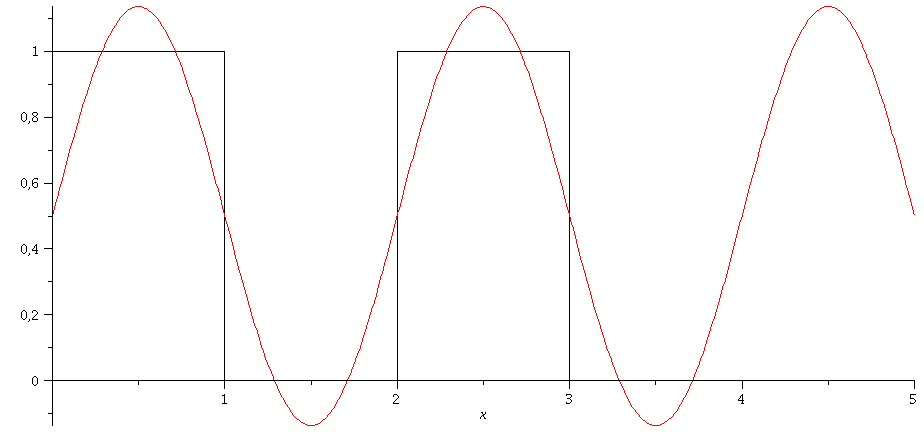 |
Beispiel 2: Dreieckskurve
| > | f:=x->piecewise(x<1,x,x<2,-x+2,x<3,x-2,x<4,-x+4):
plot(f(x),x=0..4,color=black); |
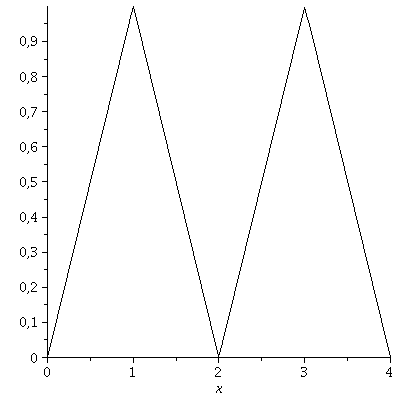 |
Fourier-Reihe mit drei Gliedern (N=2):
| > | g(0,1,2);
plot({f(x),g(0,1,2)},x=0..5); |
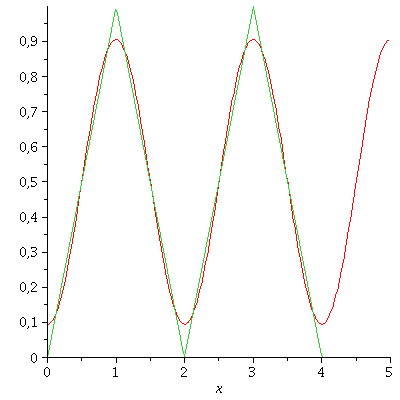 |
Fourier-Reihe mit drei Gliedern (N=10):
| > | g(0,1,10);
plot({f(x),g(0,1,10)},x=0..5); |
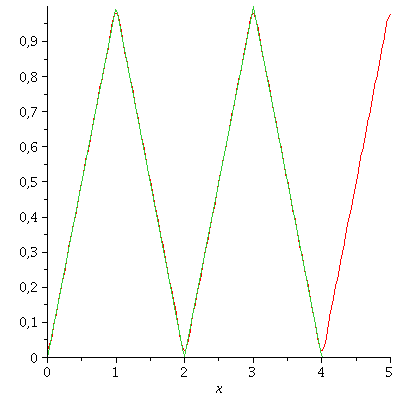 |
| > |
